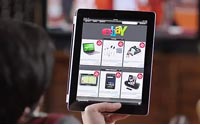retail
Channel Impact: Mobile Vs. Video Vs. In-store
- by Sarah Mahoney @mahoney_sarah, April 11, 2013
 While it’s a given that
consumers are getting more purchasing information across more channels than ever, marketers are still struggling to understand the impact each channel has. A new study from Forrester reports that the
answer has much more to do with product category than the platforms themselves.
While it’s a given that
consumers are getting more purchasing information across more channels than ever, marketers are still struggling to understand the impact each channel has. A new study from Forrester reports that the
answer has much more to do with product category than the platforms themselves.
The upshot? By industry, there’s an increasing disparity between the way consumers research a potential purchase, and the way they actually buy it. “We see clearly that the channels consumers rely on to discover or choose a brand or product don’t always align with the channels they use to find out more information,” says the report, written by Forrester analysts Cory Munchbach and Gina Sverdlov and based on data from 4,500 U.S. adults. “Proper leverage of the most influential touch points has the potential to increase consumers’ spend or basket size, facilitating a smooth transition between the explore and buy phases of the life cycle.”
advertisement
advertisement
For example, people shopping for consumer electronics purchases are most influenced by professional review websites, visiting a store, or talking with a customer service rep. But for footwear, store visits, information inside the store and brand websites matter most. And each channel has a different impact on the consumers’ willingness to pay more. Grocery shoppers are most willing to buy premium items after reading about them in social media, yet only 4% of food shoppers say they use social to make buying decisions.
Across industries, however, there are plenty of common themes. In-store visits continue to be critical: With the exception of travel, these visits are first (or a close second) in every category. And when viewing websites, people want more video, as well as multiple views of products, from every angle. Yet many sites aren’t yet offering these rich web experiences, such as those currently being used by brands like Sharpie or retailers like Amazon.com’s MyHabit. (These also encourage user-generated content, “to create a richer exploration experience,” the report says, which score higher with shoppers.)
Similarly, marketers have yet to fully grasp the different potential of mobile (for instance, some 30% of smart phone owners say they have photographed something in a story and then asked friends for opinions) versus tablets, which are more likely to be used for shopping from home, but less likely to be taken to a store.




